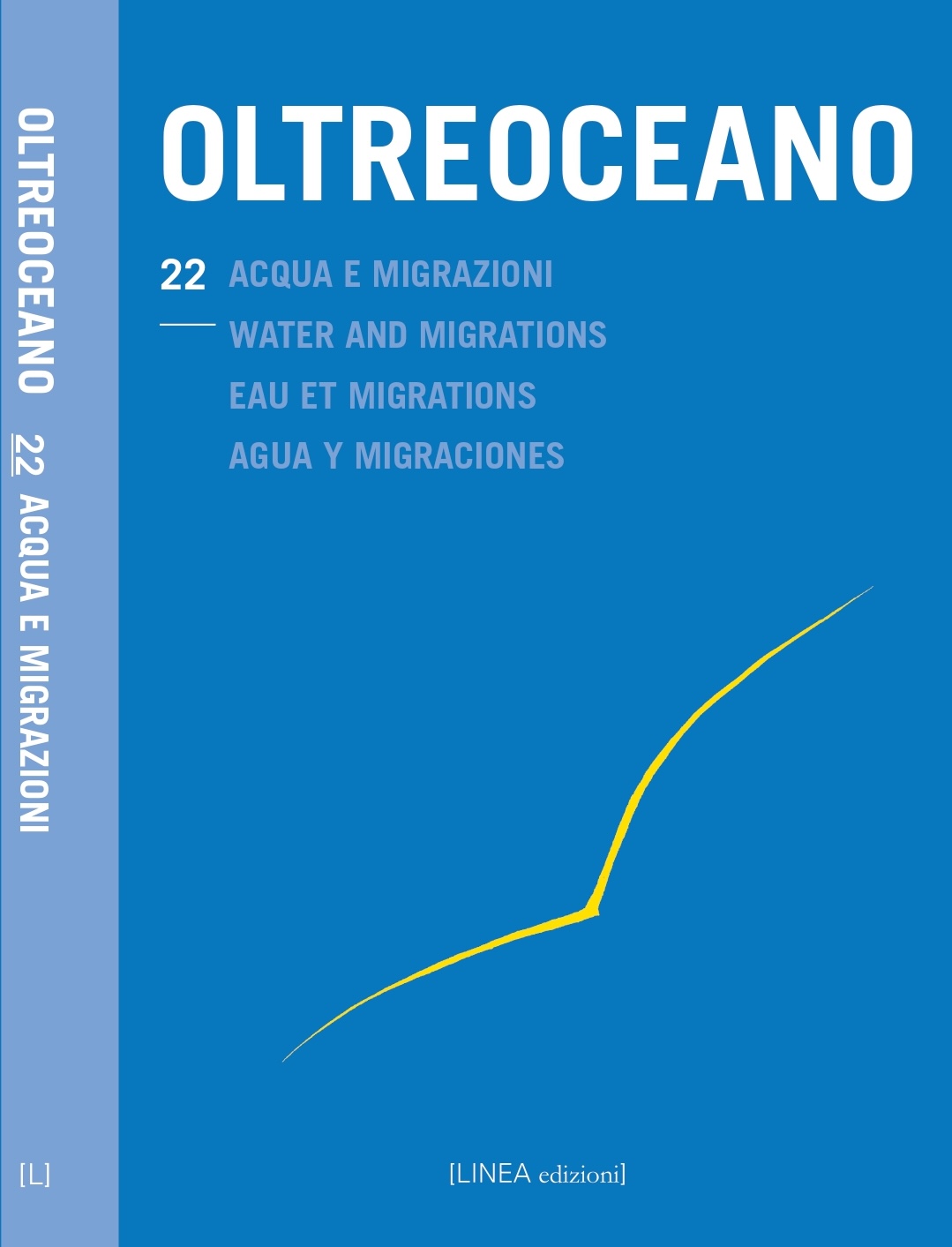• The ocean as a bridge and a barrier between Africa and Europe: Fatou Diome’s Le Ventre de l’Atlantique
DOI:
https://doi.org/10.53154/Oltreoceano85Keywords:
Fatou Diome, Le Ventre de l’Atlantique, Ocean, Bridge, BarrierAbstract
As foregrounded in the very title of Fatou Diome’s postcolonial autofiction, Le Ventre de l’Atlantique (2003), the Atlantic Ocean is an indispensable and persistent leitmotif that infiltrates both the words and the pages. The text tells the story of Salie, a young Senegalese woman based in Strasbourg, France, while Madické, her little half-brother, still lives in Senegal, on the small island of Niodor. Although she tries to discourage him, the boy would like to join his sister in Europe to pursue his dream of meeting his idol Paolo Maldini and becoming a professional football player. The telephone is their only means of contact in the immense, deep waters that separate them and, at the same time, unite their destinies. While the writer effectively deconstructs the contrast between the myth of a Europe-Eldorado and the dystopia of a poor and hopeless Africa, she also shows the reader how the ocean has many ambiguous and heterogeneous interpretations: on the one hand, the Atlantic can be a prodigious bridge, a liquid umbilical cord connecting the two continents, but, on the other, it is also a hostile and dangerous border, which becomes a tomb for some of the characters in the book. The aquatic presence accompanies the narration not only at the thematic level, but also through several aesthetic and rhetorical solutions, such as the use of metaphor, personification and zoomorphism, as well as of a fluid writing technique which mimics the wave movements of the sea. The article aims to study this stylistic and thematic polymorphism of the Atlantic in Diome’s novel, trying to show its importance for the construction of the author-narrator’s Afro-European identity.
Downloads
References
Angelfors, C. (2007): La dichotomie entre le centre et la périphérie dans Le Ventre de l’Atlantique de Fatou Diome. Växjö: Linnaeus University (mémoire de master, non publiée).
Bernabé, J., Chamoiseau, P .& Confiant, R. (1989): Éloge de la créolité. Paris: Gallimard.
Bi Kacou Diandue, P. (2008): Le Ventre de l’Atlantique, métaphore d’un mirage: idéal brisé de l’Ailleurs? In M. Nglasso-Mwatha (Éd.), Littératures, savoirs et enseignement (pp. 77-86). Pessac: Presses Universitaires de Bordeaux.
Bobaker, H. (2018): La poétique du mirage dans Le Ventre de l’Atlantique de Fatou Diome. Falun: Dalarna University (mémoire de licence, non publiée).
Chevrier, J. (2007): Fatou Diome, une écriture entre deux rives. Cultures Sud – Notre librairie, 166, pp. 35-38.
Diome, F. (2021): Le Ventre de l’Atlantique, 2003. Paris: Le Livre de Poche.
Le Livre de Poche (2023): Catalogue “Littérature”. Tiré de https://www.livredepoche.com/livre/le-ventre-de-latlantique-9782253109075 (Consulté le 24/04/2023).
Kadiobra-Kassi, B. (2003): De la littérature au féminin à la Littérature: sujets du discours et écriture dans le roman francophone au féminin (Québec/Afrique subsaharienne), thèse de doctorat, non publiée, Université de Laval.
Hoekstra, V. (2016): Le Ventre de l’Atlantique de Fatou Diome: entre témoignage et distance. Nijmegen: Radboud University (mémoire de licence, non publiée).
Mapangou, D. (2021): Voyage des enfants de la postcolonie vers l’ailleurs-paradis. Récits de migration et imagination africaine de l’Occident dans Le Ventre de l’Atlantique de Fatou Diome. Voix plurielles, 18, 2, pp. 219-232.
Musah, H. (2020): La représentation de l’Afrique et de l’Europe dans le roman contemporain Le Ventre de l’Atlantique de Fatou Diome. Helsinki: Helsinki University (mémoire de master, non publiée).
Sperti, V. (2013): La letteratura africana in francese. Dalla Négritude ai giorni nostri. Napoli: Libreria Dante & Descartes.
Downloads
Published
How to Cite
Issue
Section
License

This work is licensed under a Creative Commons Attribution-NonCommercial-ShareAlike 4.0 International License.
The authors undertake to comply with the following conditions, which are considered accepted at the time of submission of their contributions.
The sending of a text implies that it is unpublished and not submitted to be published elsewhere.
1. If accepted, the author shall confer on the publisher the right to publish and distribute it both in paper form and in the online electronic edition. The published articles will be downloadable and made available in open access.
2. Provided that it correctly indicates that the first publication took place in the journal Oltreoceano. Rivista sulle migrazioni the author has the right to: a) reproduce the article in separate extracts or collected in a volume; b) publish the article on their personal website or teaching site provided that these sites are of a non-commercial nature; c) deposit the article in online archives of a non-commercial nature, linked to the institution they belong to or as part of projects for the non-commercial dissemination and open access of scientific works.
The use of contributions by third parties, for commercial or otherwise unauthorized purposes, is not allowed. The publisher declines all responsibility for the unauthorized use of the material published in the journal.












